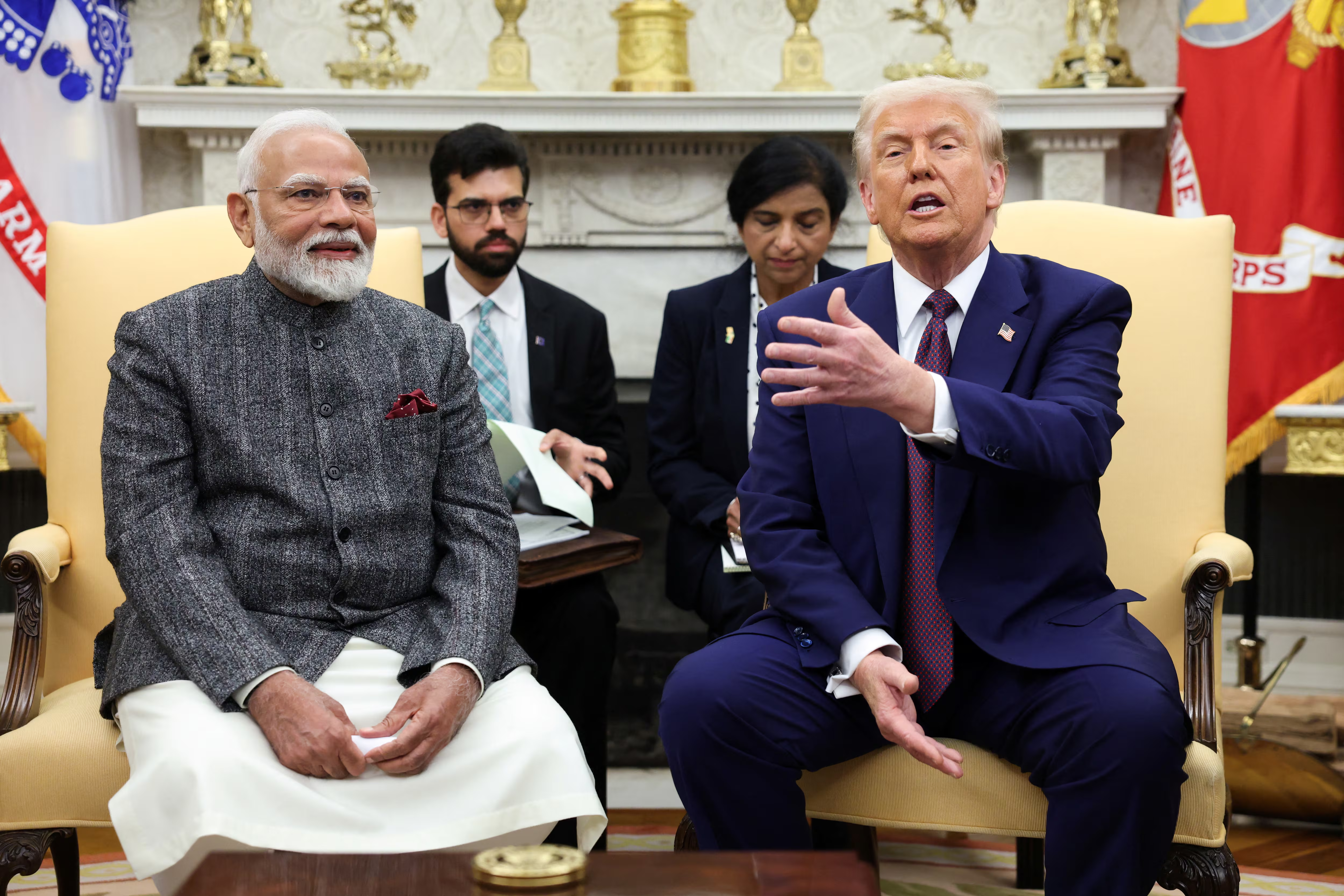U.S. and India to double bilateral trade in five years, Prime Minister Modi says, as Trump tariffs loom
Key Points
- India and the U.S. will work to more than double bilateral trade to $500 billion by 2030, Indian Prime Minister Narendra Modi said at a joint press conference with U.S. President Donald Trump on Thursday.
- Trump acknowledged India’s recent move to reduce tariffs on select imports and said he would begin talks on disparities on trade and hoped to reach an agreement.
- The U.S. will increase its military sales to India starting this year and ultimately provide F-35 fighter jets to the Asian ally, Trump said at the briefing.

New Delhi and Washington will work to more than double bilateral trade to $500 billion by 2030, Indian Prime Minister Narendra Modi said at a joint press conference with U.S. President Donald Trump on Thursday.
Speaking at the conclusion of the two leaders’ meeting in Washington, Modi also said that “Our teams will work on concluding very soon, a mutually beneficial trade agreement.”
Trump acknowledged India’s recent move to reduce tariffs on select imports and said he would begin talks on disparities on trade and hoped to reach an agreement.
The remarks came hours after Trump signed a presidential memorandum outlining his plan to impose “reciprocal tariffs” on foreign nations, including India.
The U.S. would simply charge the same tariff rates that India charges, Trump said, while the trade deficit with India could be addressed with the sale of oil and gas.
India’s simple average tariff on countries with the most-favored-nation status stands at 17%, compared with the U.S. that levies 3.3%. The U.S. enjoys MFN status with most major economies.
U.S. total goods trade with India is estimated at $129 billion in 2024, according to the Office of the U.S. Trade Representative. India’s surplus with the U.S., its second-largest trading partner, reached $45.7 billion last year.
The U.S. will increase its military sales to India starting this year and ultimately provide F-35 fighter jets to the Asian ally, Trump said at the briefing, in an effort to confront what he called “the threat of radical Islamic terrorism.” India is the world’s biggest defense equipment importer.
Modi said India and the U.S. would also work together on developing artificial intelligence and semiconductors while focusing on establishing strong supply chains for strategic minerals.
The lofty target of $500 billion in trade could be achievable, Raghuram Rajan, professor of finance at University of Chicago Booth School of Business and former Reserve Bank of India governor, told CNBC’s “Squawk Box Asia.”
Besides shifting away from Russia — India’s key defense supplier — toward the U.S. for arms, India could also increase its purchases of liquified natural gas from American manufacturers, Rajan added.
The Trump-Modi meeting had the threat of U.S. tariffs looming large.
“We are, right now, a reciprocal nation… We’re going to have whatever India charges, we’re charging them. Whatever another country charges, we’re charging them. So it’s called reciprocal, which I think is a very fair way,” the U.S. president said at the press briefing.
The president said that the reciprocal tariffs will not take effect immediately as his administration works on determining the appropriate tariff levels for each affected country.
Trump has already slapped tariffs on China, Canada and Mexico as well as global tariffs on imports of steel and aluminum. Trump’s tariffs on Canada and Mexico are currently on pause after both countries pledged to crack down on illegal drug trafficking at their respective borders with the U.S.
Despite the encouraging tones from the meeting, signs of friction remain in the U.S.-India relation, said Daniel Balazs, a research fellow at the S. Rajaratnam School of International Studies, such as the illegal immigration issue and India’s close ties with Russia.
“The latter, in particular, is unlikely to go away anytime soon and will probably remain a sore point between the two sides,” he said.

